- Forklift Lithium Battery
-
48V
- 48V 210Ah
- 48V 300Ah
- 48V 420Ah (949 x 349 x 569 mm)
- 48V 420Ah (950 x 421 x 450 mm)
- 48V 456Ah
- 48V 460Ah (830 x 630 x 590 mm)
- 48V 460Ah (950 x 421 x 450 mm)
- 48V 460Ah (800 x 630 x 600 mm)
- 48V 460Ah (820 x 660 x 470 mm)
- 48V 500Ah
- 48V 560Ah (810 x 630 x 600 mm)
- 48V 560Ah (950 x 592 x 450 mm)
- 48V 600Ah
- 48V 630Ah
-
48V
- Lithium Golf Cart Battery
- 12V Lithium Battery
12V 150Ah Lithium RV Battery
Bluetooth App | BCI Group 31
LiFePO4 Lithium
Discharge Temperature -20°C ~ 65°C
Fast Charger 14.6V 50A
Solar MPPT Charging - 24V Lithium Battery
- 36V Lithium Battery
- 48V Lithium Battery
-
48V LiFePO4 Battery
- 48V 50Ah
- 48V 50Ah (for Golf Carts)
- 48V 60Ah (8D)
- 48V 100Ah (8D)
- 48V 100Ah
- 48V 100Ah (Discharge 100A for Golf Carts)
- 48V 100Ah (Discharge 150A for Golf Carts)
- 48V 100Ah (Discharge 200A for Golf Carts)
- 48V 150Ah (for Golf Carts)
- 48V 160Ah (Discharge 100A for Golf Carts)
- 48V 160Ah (Discharge 160A for Golf Carts)
-
48V LiFePO4 Battery
- 60V Lithium Battery
-
60V LiFePO4 Battery
- 60V 20Ah
- 60V 30Ah
- 60V 50Ah
- 60V 50Ah (Small Size / Side Terminal)
- 60V 100Ah (for Electric Motocycle, Electric Scooter, LSV, AGV)
- 60V 100Ah (for Forklift, AGV, Electric Scooter, Sweeper)
- 60V 150Ah (E-Motocycle / E-Scooter / E-Tricycle / Tour LSV)
- 60V 200Ah (for Forklift, AGV, Electric Scooter, Sweeper)
-
60V LiFePO4 Battery
- 72V~96V Lithium Battery
- Rack-mounted Lithium Battery
- E-Bike Battery
- All-in-One Home-ESS
- Wall-mount Battery ESS
-
Home-ESS Lithium Battery PowerWall
- 24V 100Ah 2.4kWh PW24100-S PowerWall
- 48V 50Ah 2.4kWh PW4850-S PowerWall
- 48V 50Ah 2.56kWh PW5150-S PowerWall
- 48V 100Ah 5.12kWh PW51100-F PowerWall (IP65)
- 48V 100Ah 5.12kWh PW51100-S PowerWall
- 48V 100Ah 5.12kWh PW51100-H PowerWall
- 48V 200Ah 10kWh PW51200-H PowerWall
- 48V 300Ah 15kWh PW51300-H PowerWall
PowerWall 51.2V 100Ah LiFePO4 Lithium Battery
Highly popular in Asia and Eastern Europe.
CE Certification | Home-ESS -
Home-ESS Lithium Battery PowerWall
- Portable Power Stations
How to Understand AGM Batteries: Comprehensive Guide
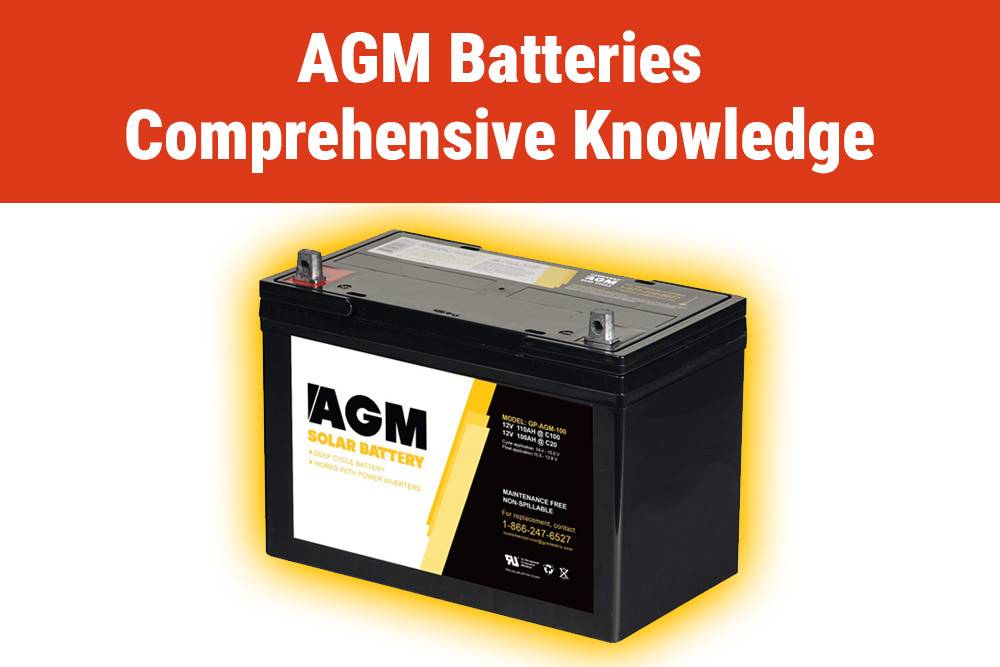
Absorbent Glass Mat (AGM) batteries are a popular choice for various applications due to their durability, maintenance-free design, and superior performance. Understanding their construction, advantages, and best uses can help consumers make informed decisions. This guide covers everything you need to know about AGM batteries, including their benefits and how they compare to other battery types.
What Are AGM Batteries and How Do They Work?
AGM batteries are a type of lead-acid battery that uses a fiberglass mat to absorb the electrolyte, allowing for a sealed and maintenance-free design. The mat keeps the electrolyte in place, preventing spills and enabling the battery to perform well in various orientations. This design enhances safety and reliability, making AGM batteries suitable for demanding applications.
What Are the Key Features of AGM Batteries?
AGM batteries offer several key features that make them advantageous:
| Feature | Description |
|---|---|
| Spill-Proof Design | The absorbed electrolyte prevents leaks, allowing for versatile installation options. |
| Low Self-Discharge Rate | AGM batteries can hold their charge longer when not in use compared to flooded batteries. |
| Vibration Resistance | The tightly packed construction allows them to withstand shocks and vibrations, ideal for automotive and marine applications. |
| Maintenance-Free | No need for regular electrolyte checks or refilling, reducing overall maintenance efforts. |
These features contribute to the popularity of AGM batteries across various industries.
Why Choose AGM Batteries Over Traditional Lead-Acid Batteries?
AGM batteries provide several advantages over traditional flooded lead-acid batteries:
| Advantage | Description |
|---|---|
| Longer Lifespan | AGM batteries typically last 2-3 times longer than conventional lead-acid batteries under similar conditions. |
| Faster Charging | They have higher charge acceptance rates, allowing them to recharge up to five times faster than flooded batteries. |
| Better Depth of Discharge | AGM batteries can safely discharge up to 80% of their capacity without damage, compared to 50% for flooded batteries. |
These benefits make AGM batteries a preferred choice for many applications.
How Do AGM Batteries Compare to Gel Batteries?
Here is a comparison chart summarizing the differences between AGM batteries and gel batteries based on the information from the search results:
| Feature | AGM Batteries | Gel Batteries |
|---|---|---|
| Electrolyte | Absorbed in fiberglass mats | Suspended in a gel-like substance |
| Temperature Tolerance | Better performance in cold temperatures | More sensitive to temperature extremes |
| Charge Acceptance | Higher charge acceptance | Slower charging speeds |
| Maintenance | Maintenance-free; minimal upkeep required | Maintenance-free; sensitive to charging methods |
| Vibration Resistance | High; suitable for high-vibration environments | Moderate; suitable for less demanding applications |
| Lifespan | Typically lasts 3-5 years with proper care | Can last 5-7 years if used correctly |
| Cost | Generally higher upfront cost | Usually lower initial cost |
| Applications | Versatile use in vehicles and power sports | Often used in deep-cycle applications like RVs |
This chart provides a clear overview of the key differences between AGM and gel batteries, helping consumers make informed decisions based on their specific needs.
What Are the Applications of AGM Batteries?
AGM batteries are suitable for a wide range of applications:
| Application | Description |
|---|---|
| Automotive | Ideal for starting engines and powering accessories in vehicles with high electrical demands. |
| Marine | Used in boats for starting engines and powering onboard electronics without risk of spills. |
| Power Sports | Commonly found in ATVs, motorcycles, and snowmobiles due to their durability and vibration resistance. |
| Renewable Energy | Suitable for solar energy systems as they can handle deep cycling efficiently. |
These applications highlight the versatility and reliability of AGM technology.
How to Maintain AGM Batteries for Optimal Performance?
Maintaining AGM batteries is relatively straightforward:
- Regular Charging: Keep them charged above 12.4 volts to prevent sulfation.
- Clean Terminals: Inspect and clean terminals regularly to avoid corrosion.
- Temperature Management: Store in a cool, dry place away from extreme temperatures.
- Periodic Testing: Use a multimeter to check voltage levels periodically.
Following these maintenance tips can help extend battery life.
What Are the Common Issues with AGM Batteries?
Common issues associated with AGM batteries include:
| Issue | Description |
|---|---|
| Overcharging | Can lead to overheating and reduced lifespan; use smart chargers that prevent this. |
| Deep Discharge | Allowing an AGM battery to discharge below 20% can cause permanent damage. |
| Temperature Sensitivity | While more resistant than flooded types, extreme temperatures can still affect performance. |
Being aware of these issues helps users take proactive measures.
Frequently Asked Questions About AGM Batteries
Q1: How long do AGM batteries typically last?
A1: With proper maintenance, AGM batteries can last between 3 to 7 years, depending on usage conditions.Q2: Are AGM batteries worth the extra cost?
A2: Yes, they offer longer lifespans, faster charging times, and lower maintenance needs compared to traditional lead-acid batteries.Q3: Can I use an AGM battery as a replacement for a flooded lead-acid battery?
A3: Yes, as long as the size and terminal configurations match; however, ensure your charging system is compatible with AGMs.
Industrial News: Innovations in Battery Technology
The battery industry is experiencing rapid advancements with increasing adoption of Absorbent Glass Mat (AGM) technology due to its superior performance characteristics compared to traditional lead-acid options. Innovations focus on enhancing charge efficiency, reducing self-discharge rates, and improving overall lifespan through advanced materials and manufacturing techniques, reflecting growing demand across automotive and renewable energy sectors.
Redway Power Expert Views on Battery Selection
“Choosing the right battery type is essential for ensuring reliable performance,” states an expert from Redway Power. “AGM batteries provide an excellent balance of power output, longevity, and maintenance-free operation, making them ideal for a wide range of applications from automotive to renewable energy.”
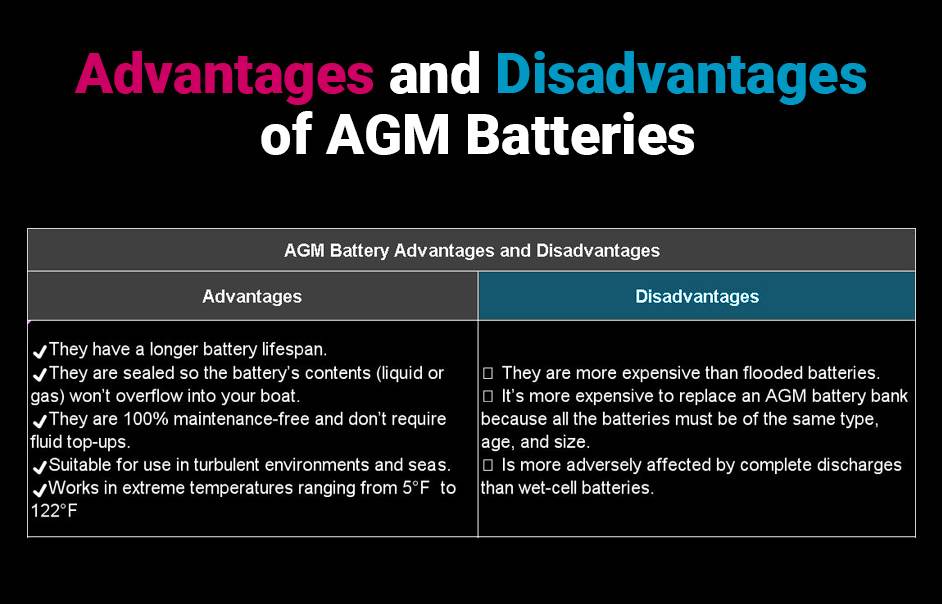
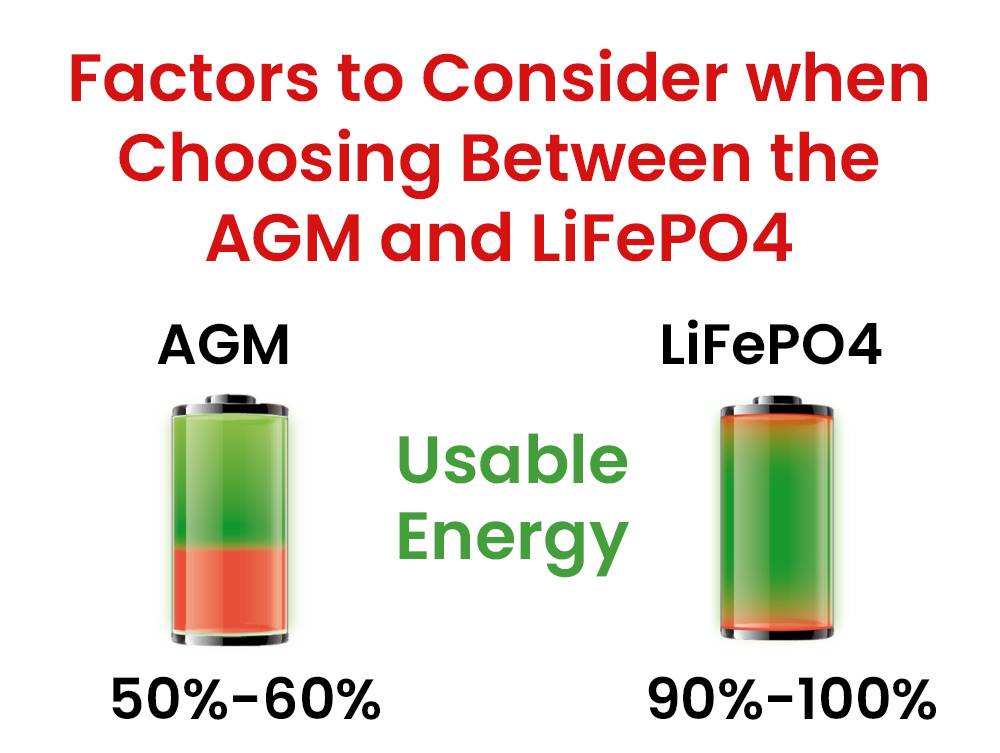
Conclusion
In conclusion, AGM batteries offer a comprehensive power solution for a wide range of applications, combining reliability, performance, and eco-friendliness. With their unique construction, fast charging capabilities, and recyclability, AGM batteries continue to be a popular choice in the battery industry. Whether used in deep cycle, starter, or power sport applications, AGM batteries deliver consistent performance and durability.
For personalized guidance on selecting the right battery for your specific needs, reach out to Redway Power’s experts who can provide tailored solutions and recommendations based on your requirements. Make the switch to AGM batteries for a reliable and efficient power source that meets your energy storage needs.
FAQs
Can You Charge an AGM Battery with a Regular Charger?
Charging an AGM battery using a regular charger is not recommended. AGM (Absorbent Glass Mat) batteries have different charging requirements compared to conventional flooded lead acid batteries that are typically charged using a regular charger. For AGM batteries, it is necessary to use a specific battery charger designed for AGM batteries to ensure proper charging. Therefore, to charge a 12 Volt AGM marine battery effectively, using the correct battery charger specifically for AGM batteries is essential for maintaining the battery’s performance and lifespan.
Can I wire different battery types and sizes together?
When considering wiring different battery types and sizes together, it is essential to prioritize compatibility and balance. Ideally, using batteries of the same type and size for parallel connections is recommended for optimal performance. This approach minimizes potential efficiency losses and ensures a more uniform power distribution across the batteries in the setup.
If you find it necessary to wire different battery types and sizes together, it is crucial to ensure that they are compatible in terms of chemistry and specifications. For example, if you are combining an original AGM battery with other batteries, it is advisable to use batteries of the same type (AGM) to maintain consistency in performance and avoid potential issues due to mismatched characteristics.
Prior to connecting different batteries together, it is recommended to carefully review the manufacturer’s guidelines and specifications for each battery type. This will help you assess whether the batteries can be safely and effectively wired in parallel, taking into account factors such as voltage, capacity, and charging requirements.
Keep in mind that mixing different battery types and sizes can lead to imbalances in the system, potentially impacting overall performance and longevity. Therefore, if possible, sticking to batteries that are the same type and size is the best practice for ensuring the reliability and efficiency of your battery setup.
What type of batteries are best for solar power?
When considering the best type of batteries for solar power, it’s essential to evaluate various options that cater to different needs and preferences. Deep-cycle batteries such as flooded lead acid, AGM, gel, and lithium iron batteries are commonly used for solar energy storage. Each type of battery offers distinct advantages in terms of efficiency, maintenance requirements, charging time, service life, and cost.
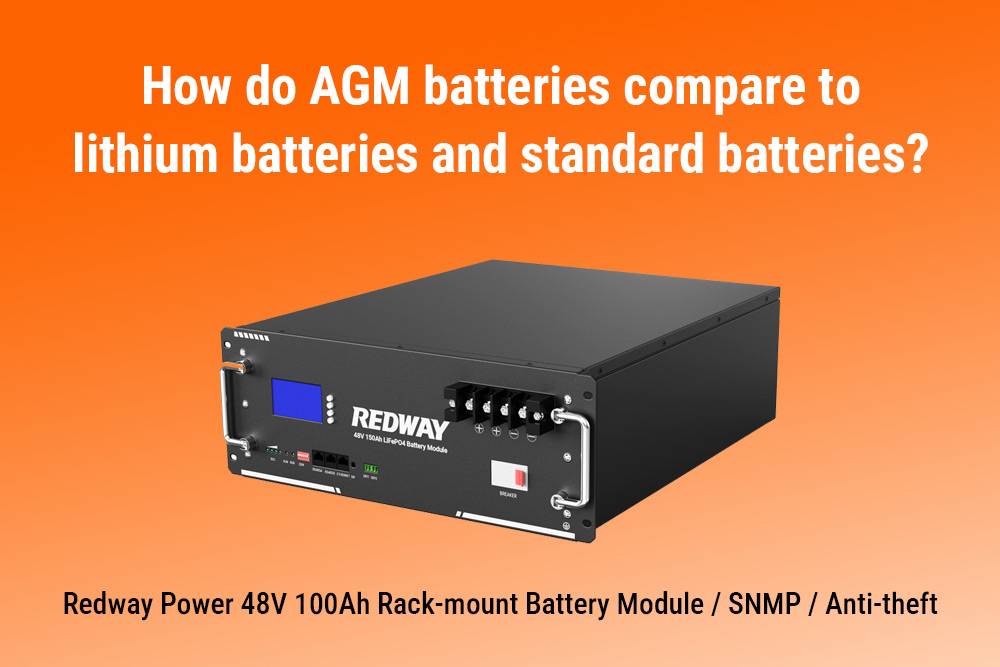
Flooded lead acid batteries are known for being cost-efficient, making them a popular choice among consumers looking for an economical option. Sealed lead acid batteries, on the other hand, offer higher charging efficiency and energy capacity at a reasonable price point. Lithium iron batteries, although more expensive, are considered superior in terms of performance and longevity, making them a top choice for those seeking high-capacity and portable energy storage solutions.
For individuals seeking a comprehensive solar panel battery solution, a solar station or solar-powered generator integrated with LiFePO4 batteries may be the ideal choice, offering a balance of efficiency, capacity, and portability. Ultimately, the best type of battery for solar power depends on individual needs and budget considerations.
How can I determine if my battery is an AGM battery?
To determine if a battery is an AGM (Absorbent Glass Mat) battery, there are several steps you can follow:
1. Check the Manufacturer’s Labels: The type of battery is usually indicated on product labels attached to the battery. If the label is not clear or missing, you can refer to the user manual for specifications. If the manual is also unavailable, contact the online store where you purchased the battery or visit the physical store.
2. Examine the Top of the Battery: AGM batteries have distinct negative and positive terminals that protrude from their flat top. If you notice these terminals, there’s a high likelihood that your battery is an AGM type.
3. Perform a Light Shake (Not Recommended): As a last resort, you can gently shake the battery. If you hear or feel fluid moving inside the battery, it is likely a wet battery. However, if you feel a solid or not much movement inside, then it is likely an AGM battery. Note that this step is not advised as it could potentially damage the battery.
Are AGM batteries worth it?
Certainly! AGM batteries are definitely worth considering depending on your specific requirements. For vehicles, AGM batteries serve as an excellent upgrade option for starter applications due to their superior quality, extended lifespan, and low maintenance needs compared to traditional lead-acid batteries. Despite their numerous advantages, AGM batteries are often similarly priced to flooded batteries, making them a practical choice for those seeking a reliable power source for their vehicle.
However, for solar energy storage solutions, the recommendation shifts towards lithium-ion batteries. While AGM batteries are beneficial for certain applications, lithium-ion batteries stand out for their exceptional quality, efficiency, and significantly longer lifespan. Despite their higher initial cost, the performance and longevity of lithium-ion batteries make them a worthwhile investment in the long term. In the realm of 12V batteries, lithium-ion batteries are considered the superior option due to their unmatched capabilities.
How do AGM batteries compare to lithium batteries and standard batteries?
When comparing AGM batteries to lithium batteries and standard batteries, it’s essential to consider unique aspects of each battery type. AGM batteries, which utilize a fiberglass mat to hold the battery acid, have distinct characteristics compared to lithium batteries and standard batteries.
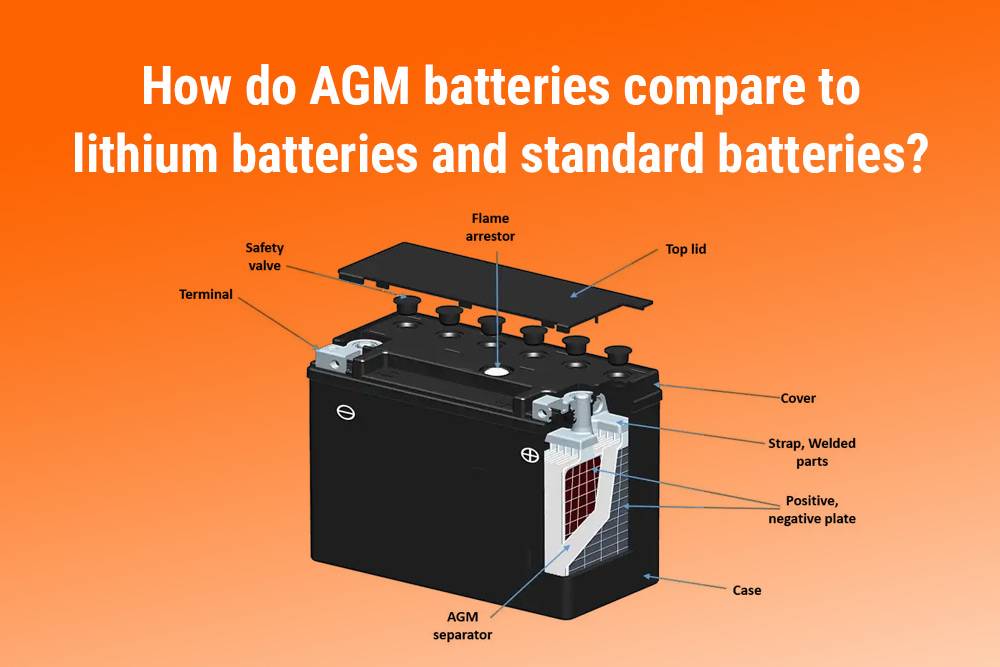
AGM batteries are a type of lead-acid battery, along with flooded and gel batteries. The key difference is that AGM batteries prevent the liquid acid from freely flowing, providing a spill-proof solution. In contrast, lithium batteries use lithium iron phosphate technology, which offers advantages in capacity, service life, and safety.
When it comes to choosing the best type of battery for your needs, factors such as capacity, service life, maintenance requirements, costs, and safety play a crucial role. While AGM batteries have their advantages in certain applications, lithium batteries are often preferred when capacity is a priority and cost considerations are secondary.
In summary, AGM batteries offer a different set of benefits compared to lithium batteries and standard batteries, making them suitable for specific situations where spill-proof properties and performance are key factors. Ultimately, the choice between AGM, lithium, and standard batteries depends on your specific requirements and priorities.
How long does an AGM battery last?
AGM batteries are known for their longevity, with an average lifespan of six to eight years in start-stop applications. The durability of AGM batteries in storage is influenced by factors such as operating temperature, depth of discharge (DoD), and battery performance degradation over time. Generally, proper maintenance and usage can extend the overall lifespan of an AGM battery.
What are the pros and cons of AGM batteries?
Indeed, the cost of AGM batteries is slightly higher than flooded batteries, yet this premium investment offers significant benefits. While flooded batteries require regular maintenance, AGM batteries stand out for their lower maintenance needs and overall enhanced performance. In addition to cost considerations, AGM batteries are favored for their lower weight and superior functionality, making them a popular choice over Gel batteries. Depending on your application and budget, opting for AGM batteries can prove to be a superior choice in terms of reliability and efficiency.















